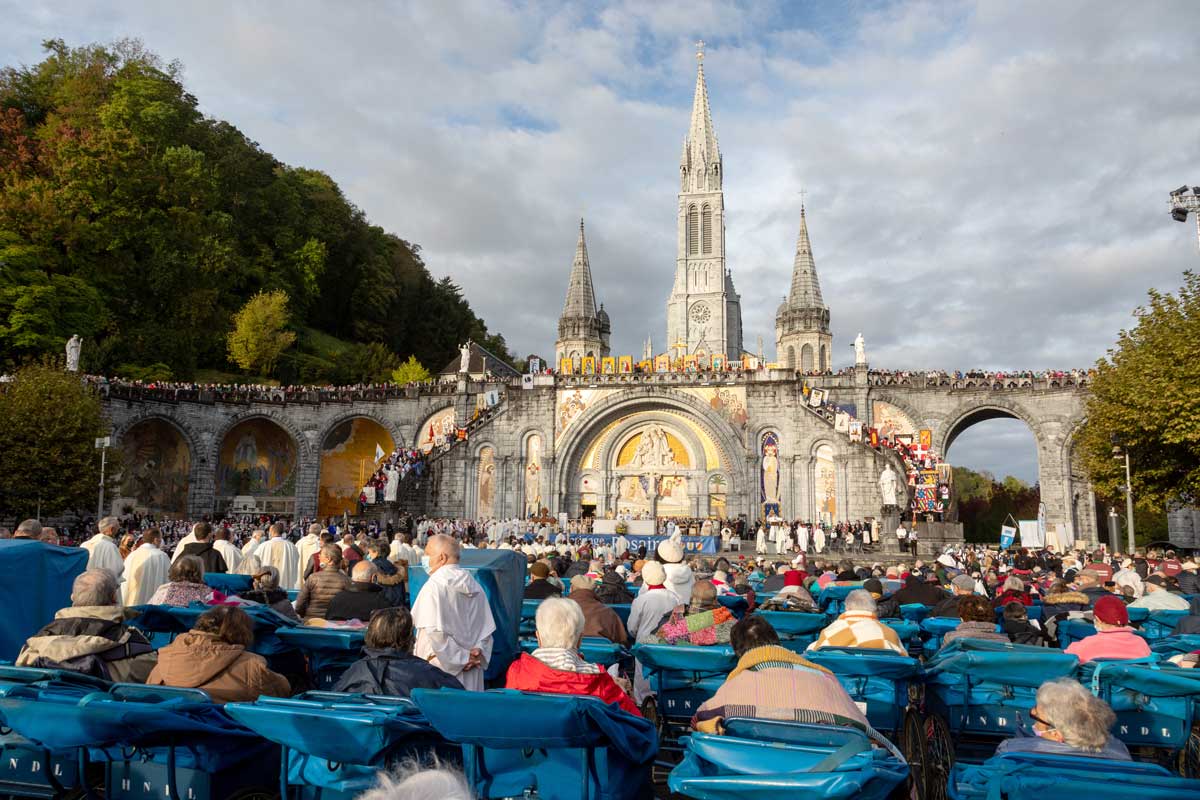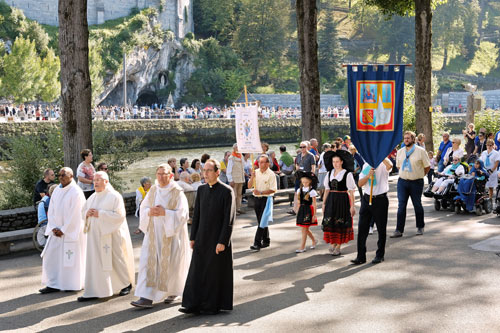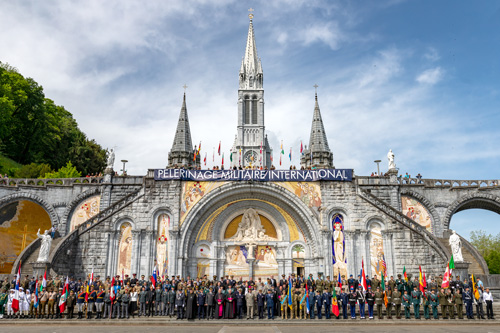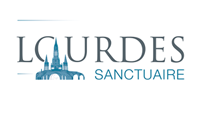
Pilgrimages to Lourdes
For individuals, a pilgrimage is a process that everyone can undertake to remember what the Church teaches: life on Earth is a pilgrimage that leads us to God.
A pilgrimage undertaken by a group of faithful or a religious community is a collective act that bears witness to the Faith that drives it.
History of the pilgrimages to Lourdes
Since February 11, 1858, the day of the first apparition, the number of visitors to the Grotto has been growing.
“Go and tell the priests to build a chapel here and that people should come in procession”
Responding to the Virgin Mary’s call, the first official pilgrimages were formed as soon as the Apparitions were recognised in 1862. Those pilgrimages came mainly from the Pyrenees and were set up on the initiative of parishes. The parish of Loubajac was the first one to go to the Grotto on 25 July 1864.
1866 was a milestone year with the arrival of the Missionaries of the Immaculate Conception who started organising the pilgrimages concretely. That same year, the crypt was blessed and the service at the Grotto of Massabielle inaugurated. Finally, the first trains arrived at Lourdes station, bringing in many pilgrims.

Progressive organisation of pilgrimages to Lourdes
In 1872, in the enthusiasm of the success of the first pilgrimage of the “Association Notre-Dame de Salut” to La Salette, a general council for pilgrimages was created.
Very soon, the pilgrimages welcomed sick people. In order to provide them with suitable accommodation, the Daughters of Our Lady of Sorrows began building a hospital called “Notre-Dame des Douleurs” in 1874. In 1885, the “Hospitalité Notre-Dame de Lourdes” was created to take care of those sick pilgrims on their arrival in Lourdes.
The first improvements were made to welcome the pilgrims: the course of the river Gave was set back to enlarge the space in front of the Grotto, and the first shelters were built.
In 1883, the “Bureau des Constatations Médicales” (Medical Bureau of the Sanctuary) was inaugurated. It was entrusted to Dr Dunot de Saint-Maclou who devoted himself to observing cures.
It was not until 1938 and a decree from the Holy See encouraging pilgrimages that the “Association des Directeurs Diocésains de Pèlerinages” (association of diocesan pilgrimage directors) started coordinating the various pilgrimage activities. The association became a national association in 1949 and was then known as “Association Nationale des Directeurs Diocésains de Pèlerinages” (ANDDP); it organises pilgrimages both materially and spiritually.

In Lourdes, there are different types of pilgrimages:
• Diocesan pilgrimages: Lille, Middlesbrough… organized around their bishops and with their Hospitalities
• Pilgrimage networks: Unitalsi…
• Themed pilgrimages: those of the culinary professions, Gardians, bikers, etc. are events that are always awaited by pilgrims and the people of Lourdes.
• National pilgrimages: Assumptionists (French National Pilgrimage), Rosary Pilgrimage… are pilgrimages organised by religious families (Assumptionists, Dominicans) which gather up to 20,000 pilgrims
• International pilgrimages: International Military Pilgrimage, Order of Malta… these are pilgrimages combining nationalities from all over the world who come to pray together at the Grotto
• “one-off” gatherings: these are major events often linked either to the pastoral theme of the Sanctuary, or to the Church’s strong themes (jubilee, anniversary…).





